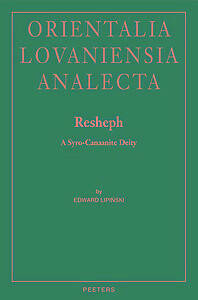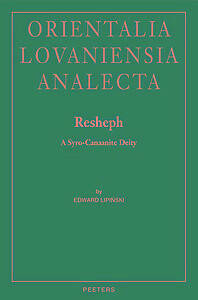
- Afhalen na 1 uur in een winkel met voorraad
- Gratis thuislevering in België vanaf € 30
- Ruim aanbod met 7 miljoen producten
- Afhalen na 1 uur in een winkel met voorraad
- Gratis thuislevering in België vanaf € 30
- Ruim aanbod met 7 miljoen producten
Zoeken
€ 75,00
+ 150 punten
Omschrijving
The excavations of the last eighty years, especially at Ugarit, Ebla, and Emar, have accumulated an exceptional amount of source material referring to the Syro-Canaanite god Resheph, whose history can now be followed during three thousand years. Chapter I deals with Resheph in the Ebla texts, already witnessing his assimilation to the Mesopotamian god Nergal, while Chapter II is dedicated to his consort Adamma. Western Asiatic sources of the second millennium B.C., in particular those from Mari, Ugarit, Ras Ibn Hani, and Emar, are presented in Chapter III, while Chapter IV concerns the Syro-Canaanite iconography of Resheph. His cult in Egypt during the second millennium B.C. is examined in Chapter V, while Chapters VI and VII deal with the first millennium B.C. and the later references to Resheph in midrashic literature. Aramaic, Phoenician, Hebrew, Egyptian, and Greek sources are surveyed in detail with a particular attention to biblical texts. Several indices help using the extensive onomastic and cultic data collected in the book, always with references to the original or most recent publications of the pertinent epigraphic, literary, and iconographic material.
Specificaties
Betrokkenen
- Auteur(s):
- Uitgeverij:
Inhoud
- Aantal bladzijden:
- 297
- Taal:
- Engels
- Reeks:
- Reeksnummer:
- nr. 181
Eigenschappen
- Productcode (EAN):
- 9789042921078
- Verschijningsdatum:
- 1/02/2010
- Uitvoering:
- Hardcover
- Formaat:
- Genaaid
- Afmetingen:
- 168 mm x 246 mm
- Gewicht:
- 725 g

Alleen bij Standaard Boekhandel
+ 150 punten op je klantenkaart van Standaard Boekhandel
Beoordelingen
We publiceren alleen reviews die voldoen aan de voorwaarden voor reviews. Bekijk onze voorwaarden voor reviews.











